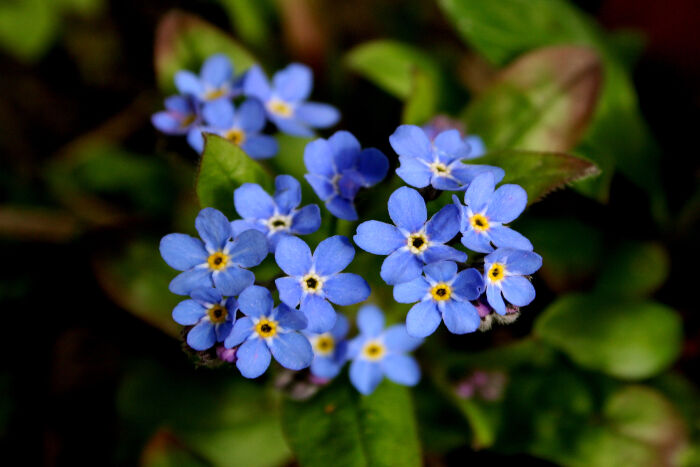

It’s easy to overlook a wild clump of Forget Me Not because most plants produce small flowers. However, this humble plant has a rich history of meaning behind it. As a symbol of myth and history alike, it’s a worthwhile addition to your flower repertoire. Learn more about what the Forget Me Not symbolizes by taking a stroll down memory lane.
All of the hundreds of flowers in the Myosotis genus can be called Forget Me Nots. This unusual Greek name means mouse’s ear, which is a pretty literal description of the shape of the flower’s small petals. The descriptive name first came from the German term Vergissmeinnicht. Most stories and myths involving this flower took place in Germany and the surrounding countries, but an English name was in use by the beginning of the 1400 century in the rest of Europe. Despite translation challenges, most other countries use a similar name or phrase to describe the same flower.
Since the Germans coined the most common name used for this flower, it’s natural that there’s a myth of two lovers walking along the Danube River first seeing the bright blue blossoms. The man retrieved the flowers for the woman, but he was swept away by the river and told her not to forget him as he floated away. Whether the story is true or not, it’s certainly made the Forget Me Not a lasting symbol of remembrance. It’s also been adopted as a symbol by the Freemasons who faced persecution for their beliefs, and represents the Armenian Genocide that started in 1915. The Alzheimer’s Society uses it as an icon to raise awareness for the disease and support for caretakers. While the Forget Me Not has played a big role in Europe and America over the last few hundred years, it’s still relatively rarely used in other cultures.
Each variety in the Forget Me Not family produces slightly different flowers, but the main type used for bouquets and flower beds produces small blue flowers with five petals. Careful breeding has produced pink, purple, and white varieties, although they are not as commonly available from florists and nurseries as the classic blue variety. Most types prefer dry conditions and light sandy soils, yet there are varieties that can thrive in any kind of garden or yard.